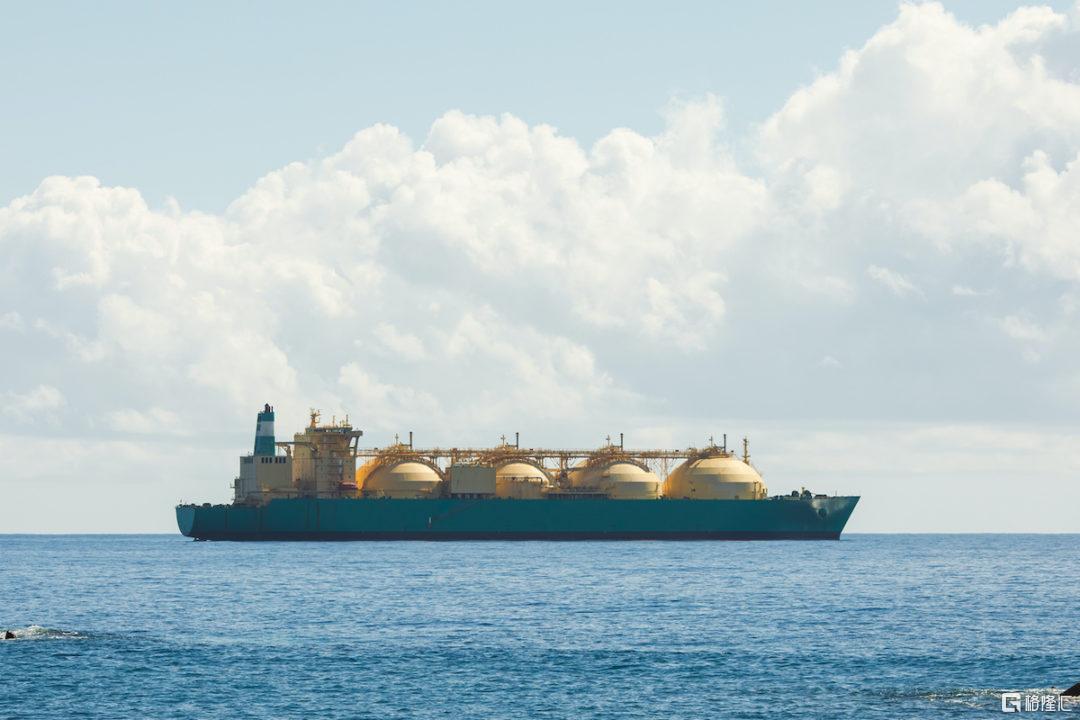
Robert J. Bowman(SupplyChainBrain)
一場緩慢的競賽正在上演,各種船用“綠色”替代燃料正爭奪未來數年的主導地位 — 目前尚未明確誰會是最終勝利者。
唯一確定的是,全球海運業必須摒棄從機械推進系統出現以來一直依賴的“污染性”化石燃料。
綠色轉型的推動力來自聯合國國際海事組織 (InternationalMaritime Organization (IMO) 要求於2030年將國際航運二氧化碳排放量最少減少40%。 國際海事組織在2023年「減少船舶溫室氣體排放戰略」中設定了最終目標 — 儘快在本世紀實現徹底淘汰這種排放。
從2025年1月1日起,所有海運營運商必須開始計算其溫室氣體排放量和碳足跡總量。 國際海事組織將跟進和執行這一規定,近90%的全球貨運將受到影響。
要實現這減排目標,行業需徹底改用其他類型的船舶燃料。 可選擇的替代燃料包括生物燃料 (biofuels) 、液化天然氣 (LNG) 、甲醇(methanol)、氫 (hydrogen) 和氨 (ammonia) 等。
業內的一些估算,每個“綠色”替代燃料方案在一定程度上都可以減少船舶的溫室氣體排放,但成本比當前被廣泛使用的高硫含量燃料高出兩到三倍。
這些方案在效果和可行性方面也存有差異。 短期內最可行的是生物燃料,特別是由76%低硫燃料油和24%來自植物油的脂肪酸甲酯混合而成,被稱為B24的生物燃料。
根據在亞太地區從事船舶燃料油供應商的萬利集團主席兼行政總裁謝威廉的說法,由於B24生物燃料仍然某程度上依賴化石燃料,最終還是會被更環保的替代品所取代,以達到國際海事組織的減排目標。
被問到在全球海運業中哪種「綠色」替代燃料將被廣泛採用時,謝先生表示仍有待觀察並說:“集裝箱公司對這個議題還沒有達成共識。”
他預計船舶運營商在短中期將探索多種燃料,並會將它們結合使用,直到達成共識。
目前最被廣泛使用的替代燃料是液化天然氣。 液化天然氣比柴油在燃燒時更為潔凈,另分銷基礎設施都經已建立,供應量也能夠滿足行業需求。此外它比柴油更難燃點,亦不需高壓存儲,大大降低了爆炸的可能性。
然而,液化天然氣仍然是一種化石燃料,對船舶運營商而言非長遠之計。 謝先生亦表示,液化天然氣的價格受季節影響,價格在供暖需求增加的冬季會上漲。
謝先生個人較傾向以甲醇作為船用燃料,因它可融入船舶的雙燃料推進系統,於現行的船舶改裝後便可使用。許多新建船舶都是搭載甲醇燃料動力發動機的船舶。 例如,馬士基已經訂購了18艘甲醇動力集裝箱船,其中首艘已於2023年年底下水,並在今年2月開始在亞洲和歐洲航線上投入服務。 中遠海運和長榮海運也訂購了使用甲醇作為燃料的船舶。
謝先生續表示,過去12個月內,甲醇船訂單量與其他新能源船舶相比都有顯著增加。
運營商將為使用各類替代燃料負擔更高的費用,然而新建船舶更高效的發動機以及減排的效果所帶來的好處可抵消部分額外成本。不過,謝先生估計,由於需要擴大產能和分銷以滿足行業需求,氫和氨將是最昂貴的選擇。
船舶燃料加註的成本和物流也需要列入考慮。B24生物燃料可以存儲和加註到現有設施和油輪上,而液化天然氣、氫和氨則需要利用加壓儲罐和專門設計的駁船。
謝先生說,“雖然高濃度的生物燃料亦需使用可裝載甲醇的化學品船,但其他替代燃料都需要全新的基礎設施投資。”
儘管國際海事組織要求在短期內大幅減少船用燃料的碳排放,但海運業在決定如何“綠化”其船舶方面可能需要更長的時間。謝先生預測,替代燃料的前景可能在15年內變得清晰,但要所有運營商都同意在眾多替代燃料中僅採用其中一種作為燃料,可能需要20到30年的時間。
由於船舶、加油船、儲存設施和加油點需要大量投資,而且訂購和新船需要較長的交貨時間,運營商對最佳燃料選擇採取了“觀望”態度。謝先生表示:“沒有人願意投資於不會持久的事物。”
There’s a slow-speed race going on to determine which “green” alternative marine fuel will prevail in the years ahead — and it’s far from clear at this point who the winner will be.
The only certainty is that the global shipping industry must transition away from the “dirty” fossil fuels on which it has relied since the advent of machine propulsion.
The driving force is a push by the United Nations’ International Maritime Organization to cut carbon dioxide emissions from international shipping by at least 40% by 2030. The IMO’s 2023 strategy on greenhouse gas reductions sets an ultimate goal of phasing out such emissions entirely “as soon as possible in this century.”
As of January 1, 2025, all ocean carriers must begin calculating their GHG emissions and total climate footprint. The IMO will track and enforce the rule, which will affect nearly 90% of global shipments.
Achievement of that goal will require a wholesale shift in marine fuel types. There are a number of options for powering the ships of the future, including biofuels, liquefied natural gas, methanol, hydrogen and ammonia.
Each would go some way toward reducing GHG emissions from ships, but all are more expensive than the high-sulfur-content fuels in wide use today — two to three times more, by some estimates.
They also vary in effectiveness and practicality. Among the most viable in the short term are biofuels, in particular the mixture known as B24, consisting of 76% low-sulfur fuel oil and 24% methyl ester, derived from vegetable oil. Given its partial reliance on fossil fuels, that option would eventually have to be supplanted by a greener alternative to meet the IMO’s target, says William Chia, chief executive officer and chairman of Banle Group, a marine fuel logistics provider serving the Asia-Pacific region.
Which of those fuel types will be broadly adopted by the global shipping industry remains to be seen. “Liner shipping companies have not come into common consensus about which is going to be the new one,” Chia says.
In the short- to medium-term future, he expects vessel operators to explore multiple fuels, perhaps in combination, until a consensus is reached.
The most widely available alternative fuel at the moment is LNG, which burns more cleanly than diesel, and has a distribution infrastructure already in place, as well as adequate supply to support the industry’s needs. It is also harder to ignite than diesel, and is not held under pressure, which greatly reduces the likelihood of explosions. It’s still a fossil fuel, however, and so doesn’t offer ship operators a long-term solution. In addition, Chia says, LNG is subject to seasonal pricing, ticking upward in the winter when the demand for heating increases.
Chia personally favors methanol, in part because it can be incorporated into dual propulsion systems that also burn diesel fuel, through the retrofitting of existing vessels. Methanol is the choice of many newbuilds as well. Maersk, for one, has 18 methanol-enabled vessels on order, the first of which was launched late in 2023, and entered service between Asia and Europe in February of this year. Cosco Shipping and Evergreen Line also have methanol-burning ships on order.
“The orderbook for the last 12 months for methanol vessels sharply increased compared to other types of new energy,” Chia says.
Operators will pay more for alternative fuels of all types, he says, but that extra cost will be at least partially offset by the more efficient engines of modern-day vessels, and the benefits of CO2 reduction. That said, Chia speculates that hydrogen and ammonia will be the most expensive options, given the need to scale up production and distribution to meet industry demands.
The cost and logistics of refueling must also be taken into account. B24 biofuel can be stored and transported in current facilities and tankers, while LNG, hydrogen and ammonia require pressurized storage tanks and specially designed barges.
Chia says that biofuel can utilize almost every kind of infrastructure in place today, and that there are some chemical tankers that supply methanol, but any of the other fuel options would require a completely new infrastructure investment.
Although the IMO has called for extremely short timeline in making steep reductions in GHG emissions from marine fuels, the shipping industry is likely to take much longer than that to decide how best to “green” its vessels. Chia says the alternative-fuel picture could become clearer within 15 years, but it could take between 20 and 30 years before all operators agree on a single type.
Because of the heavy investment required in ships, barges, storage facilities and refueling points, as well as the long lead times needed to order and launch new vessels, operators are adopting something of a “wait and see” attitude about the optimal fuel choice. Says China: “No one wants to invest in something that is not going to last.”
Source: https://www.supplychainbrain.com/articles/40092-which-green-fuel-type-will-ship-operators-adopt-time-will-tell
 下载格隆汇APP
下载格隆汇APP
 下载诊股宝App
下载诊股宝App
 下载汇路演APP
下载汇路演APP

 社区
社区
 会员
会员



